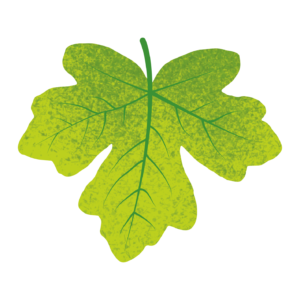Auró blanc (Catalan) | Alguergue (Galician) | Bordo-comúm (Portuguese) |
Arce (Spanish) | Érable (French)
A deciduous tree capable of reaching 20 m in height, a straight trunk with dense branches that extend to form a closed crown.
The leaves are deciduous, simple, hairless on both sides, and generally deeply palmate (5-lobed) and measuring between 3-8 cm in length.
Their greenish flowers emerge as small hanging clusters, arriving in springtime.
Their fruit appear in pairs, as samaras (seeds) with a membranous wing. The flattened seed ripens in the autumn, and as the seeds are released, they are spun by the wind, scattering them a considerable distance, the reason why they are sometimes known as the helicopter trees, given that the wings are tilted at an angle of nearly 180 degrees. The flattened seed matures in autumn.
Reaching a height of 1200 m, it can cope with the cold and grows, above all, in cool and calcareous soils. This species can survive up to 150 years.
Growing close to river edges, in gorges, on shady slopes or as a companion to other tree species such as oak, beech and holly oak.
The tree lends its name to the municipality of Astigarraga, the Place of the Maples, in the province of Gipuzkoa.
The anthropologist Telesforo de Aranzadi put forward the hypothesis that some tree names in Basque such as astigarra (maple), zumarra (elm), lizarra (ash), the bush iñarra (heather) and the fruit sagarra (apple) have been masculinized based on similar metaphors used in other languages in similar situations:
“If we accept the hypothesis that some trees in the Basque language were masculinized so that, as in Spanish, they would make a distinction between some similar plants by their description as either male or female, or by naming one in the augmentative or the other as the diminutive, or at times changing their ending such as with ´sabino´ and ´sabina´; if such a hypothesis was allowed, it could be deduced, as a consequence, that Basque, without having its own grammatical gender in names, creates some words derived by basing itself on analogical metaphors used for similar cases in other languages”.
Aranzadi Unamuno Telesforo book of 1913, De los nombres de los arces o moscones en el País Vasco y su masculinidad (On maple trees in the Basque Country and their masculinity). Revista Internacional de los Estudios Vascos (International magazine of Basque Studies).







